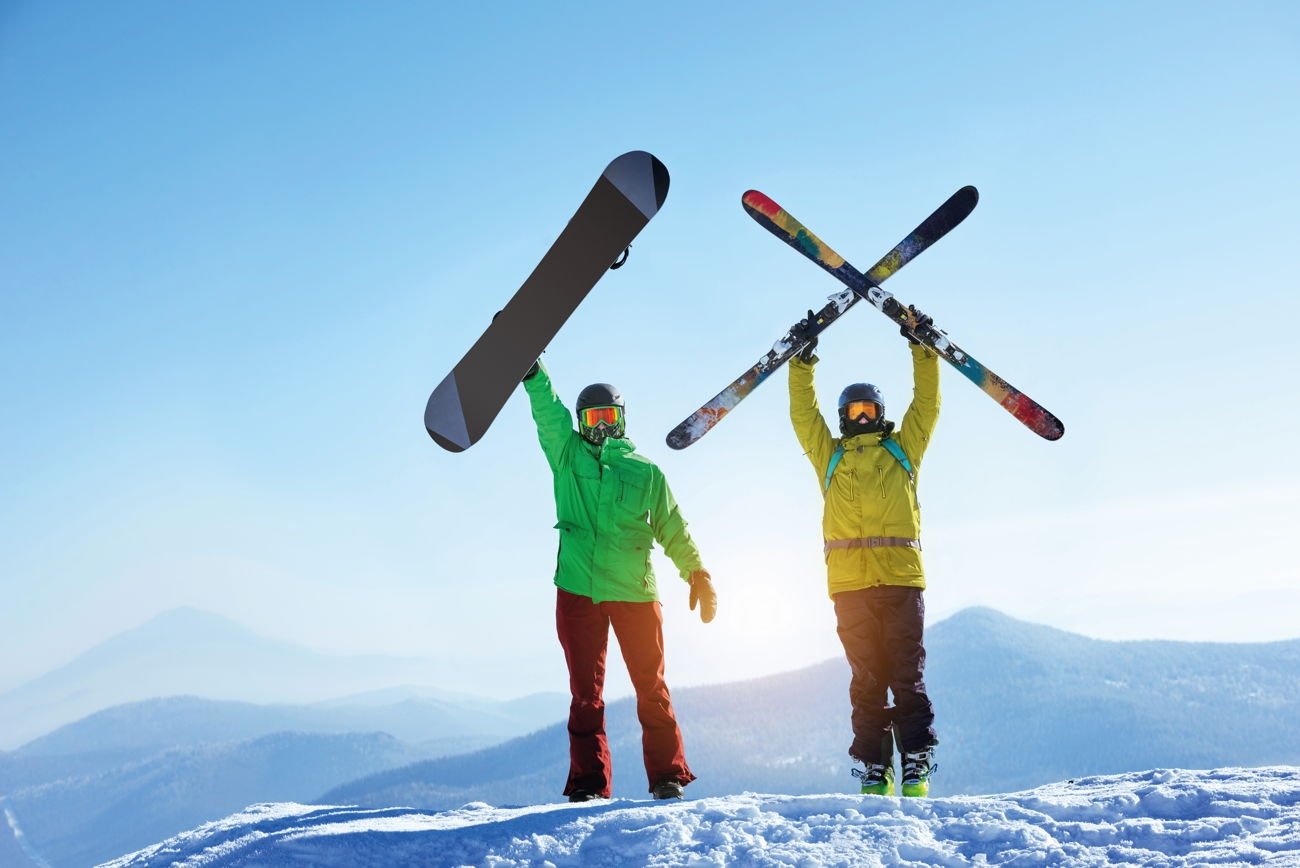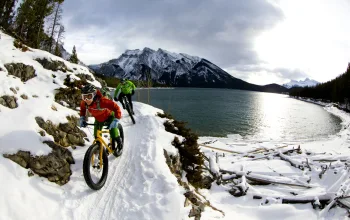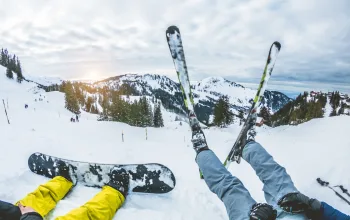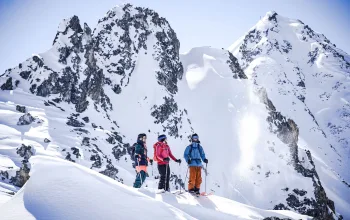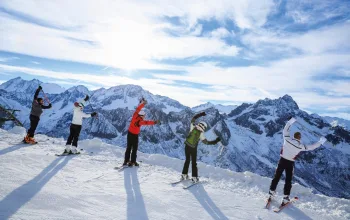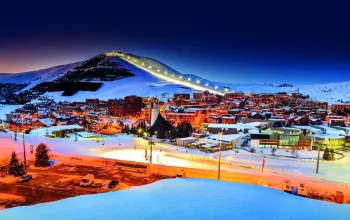The first question you’ll need to ask yourself is whether to ski or board. Snowboarding used to be the ‘cooler’ one, but the up-and-coming young freestylers have made skiing just as cool and today’s fat skis make the whole mountain accessible. Best solution? Try both and see which works for you!
Why you should learn to ski, by Graham Bell
1. Skiing has amazing symmetry, letting you turn in either direction with style and grace.
2. There’s no faffing around unstrapping at chairlifts with skis – just click in and go all day.
3. Skiing is a more versatile way to get around on varied terrain than snowboarding, and you will never get stuck on a flat.
4. With fat skis for powder and twin tips for freestyle, there’s nothing that you cannot do on a snowboard that you can’t do better on skis.
5. Alpine skiing was invented by the British, whereas the Americans came up with snowboarding!
Why you should learn to snowboard, by Ed Leigh
1. Snowboard boots are ridiculously comfortable compared to ski boots.
2. Everything that’s good about modern skiing was copied from snowboarding.
3. Snowboarding gives you the effortless, floating feeling of surfing over snow.
4. You only need to learn one technique when snowboarding, rather than trying to master snowplough, stem christie (a turning technique in skiing) and parallel turns as a new skier.
5. Did I mention the boots are like wearing trainers?
Cheat sheet: History of skiing
Skis have been around for thousands of years, and 5,000-year-old wooden skis have been found in archaeological digs in Russia. By the 18th century, skiing was popular in Scandinavia – Norwegian Sondre Norheim invented telemark skis and downhill skis were also developed. The first winter Olympics were held in 1924 in Chamonix, and freestyle skiing was recognised by the International Ski Federation in 1979.
Cheat sheet: History of snowboarding
Snowboarding came into being in 1965, when American Sherman Poppen strapped two skis together and called it a ‘snurfer’. Jake Burton Carpenter and Dimitrije Milovich then formed Burton Snowboards and Winterstick, respectively. Snowboarding was originally a bit of a guerrilla sport, with snowboarders sneaking onto forbidden pistes, but by 1998 snowboarding was finally an official winter Olympic sport.
Learn the lingo
How to decipher the weird and wonderful vocabulary of a ski resort..
Backcountry: Skiing on unmarked and unpatrolled areas outside of the ski resort boundaries.
Bluebird: A day with a bright blue cloudless sky after heavy overnight snowfall – the perfect day to seek ‘pow’.
Corduroy: When piste bashers leave behind a pattern of small ridges in the snow that appear like corduroy fabric.
Freeride: Skiing or boarding on open, un-prepared terrain, away from slopes and usually in powder snow.
Freestyle: Freestyle is all about air and ground tricks, often in the park or on jumps around the mountain.
Freshies: Untouched powder. Getting ‘freshies’ involves being the first person to ski through an area of fresh snow.
Piste-basher: A ‘piste-basher’ is a tracked vehicle that ‘grooms’ a ski hill leaving perfectly prepared pistes.
Moguls: Bumps on a piste that are formed when skiers push snow into mounds as they make their turns.
Off-piste: Basically all the snow that is not on the piste from the ungroomed stuff just off the edge, to full-on powder fields
Park: Or snow park – a purpose-built area for skiers and boarders to practise tricks on rails, boxes, and various sized jumps.
Powder snow: Or ‘pow’ – the perfect fine, dry and lightweight snow found after a fresh fall.
Ski-in, ski-out: Accommodation that’s right on the piste – so you can literally ski back to and from the door.
Vertical Drop: The vertical distance from the top to the bottom of a mountain or ski slope.
Whiteout: When visibility on the mountain is severely reduced due to heavy falling snow or thick fog.



